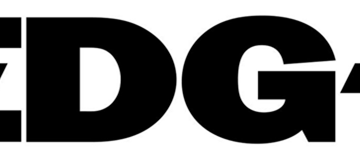MIT Technology Review Insights
2024-08-19 09:30:00
www.technologyreview.com
Finding a way to unify this disparate data is essential. In doing so, organizations must balance the explosive growth of enterprise data; the need for an on-premises, cloud-like consumption model to mitigate cyberattack risks; and continual pressure to cut costs and improve performance.
Sinclair summarizes: “What you want is something that can sit on top of this distributed data ecosystem and present something that is intuitive and consistent that I can use to leverage the data in the most impactful way, the most beneficial way to my business.”
For many, the solution is an overarching software-defined, virtualized data platform that delivers a common data plane and control plane across hybrid cloud environments. Ian Clatworthy, head of data platform product marketing at Hitachi Vantara, describes a data platform as “an integrated set of technologies that meets an organization’s data needs, enabling storage and delivery of data, the governance of data, and the security of data for a business.”
Gartner projects that these consolidated data storage platforms will constitute 70% of file and object storage by 2028, doubling from 35% in 2023. The research firm underscores that “Infrastructure and operations leaders must prioritize storage platforms to stay ahead of business demands.”

A transitional moment for enterprise data
Historically, organizations have stored their various types of data—file, block, object—in separate silos. Why change now? Because two main drivers are rendering traditional data storage schemes inadequate for today’s business needs: digital transformation and AI.
As digital transformation initiatives accelerate, organizations are discovering that having distinct storage solutions for each workload is inadequate for their escalating data volumes and changing business landscapes. The complexity of the modern data estate hinders many efforts toward change.
Clatworthy says that when organizations move to hybrid cloud environments, they may find, for example, that they have mainframe or data center data stored in one silo, block storage running on an appliance, apps running file storage, another silo for public cloud, and a separate VMware stack. The result is increased complexity and
cost in their IT infrastructure, as well as reduced flexibility and efficiency.
Then, Clatworthy adds, “When we get to the world of generative AI that’s bubbling around the edges, and we’re going to have this mass explosion of data, we need to simplify how that data is managed so that applications can consume it. That’s where a platform comes in.”

This content was produced by Insights, the custom content arm of MIT Technology Review. It was not written by MIT Technology Review’s editorial staff.
Source Link
Support Techcratic
If you find value in our blend of original insights (Techcratic articles and Techs Got To Eat), up-to-date daily curated articles, and the extensive technical work required to keep everything running smoothly, consider supporting Techcratic with Bitcoin. Your support helps me, as a solo operator, continue delivering high-quality content while managing all the technical aspects, from server maintenance to future updates and improvements. I am committed to continually enhancing the site and staying at the forefront of trends to provide the best possible experience. Your generosity and commitment are deeply appreciated. Thank you!
Bitcoin Address:
bc1qlszw7elx2qahjwvaryh0tkgg8y68enw30gpvge
Please verify this address before sending any funds to ensure your donation is directed correctly.
Bitcoin QR Code
Your contribution is vital in supporting my efforts to deliver valuable content and manage the technical aspects of the site. To donate, simply scan the QR code below. Your generosity allows me to keep providing insightful articles and maintaining the server infrastructure that supports them.

Privacy and Security Disclaimer
- No Personal Information Collected: We do not collect any personal information or transaction details when you make a donation via Bitcoin. The Bitcoin address provided is used solely for receiving donations.
- Data Privacy: We do not store or process any personal data related to your Bitcoin transactions. All transactions are processed directly through the Bitcoin network, ensuring your privacy.
- Security Measures: We utilize industry-standard security practices to protect our Bitcoin address and ensure that your donations are received securely. However, we encourage you to exercise caution and verify the address before sending funds.
- Contact Us: If you have any concerns or questions about our donation process, please contact us via the Techcratic Contact form. We are here to assist you.
Disclaimer: As an Amazon Associate, Techcratic may earn from qualifying purchases.



















































































![Conquest of Space / I Married a Monster from Outer Space [Blu-ray]](https://techcratic.com/wp-content/uploads/2025/09/81Yx1UahVuL._SL1500_-360x180.jpg)














